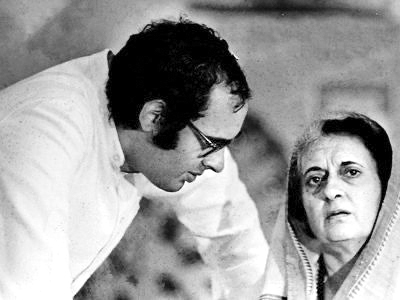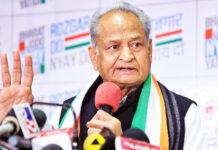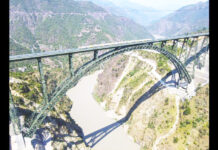The Emergency was an authoritarian crackdown, censoring press, jailing opposition, violating rights.
GOA: You can shut the press, jail the opposition, gag the courts, and turn India into a dictatorship in disguise. But there’s one thing you can’t suppress— India’s memory. It was past midnight on June 25, 1975, when India, the world’s largest democracy, slipped into a deep coma called The Emergency.
Without warning, without consultation, without conscience. It wasn’t declared by the people, nor their elected Parliament. It was declared by a Prime Minister who mistook herself for a monarch—Indira Gandhi. The Constitution was twisted into a tool of tyranny. The ink of democracy ran dry, and for 21 long months, the soul of India gasped for breath.
Let’s rewind. In June 1975, the Allahabad High Court found Indira Gandhi guilty of electoral malpractices and invalidated her 1971 Lok Sabha win. Instead of resigning with grace and facing the people again, she chose to face them with batons, censorship, and coercion. She blamed a “threat to national security.” But the only real threat was to her own throne.
What followed was not emergency governance— it was emergency paranoia. She sought advice not from statesmen but from her son, Sanjay Gandhi, who turned into a miniature dictator with delusions of grandeur. An unelected, unaccountable young man wielding raw power with reckless arrogance. The Constitution’s Article 352 became a loaded gun. The first bullet hit the press—newspapers were censored, editors harassed, printing presses raided. Even cartoons weren’t spared. The Indian Express famously left its editorial column blank— an act of resistance louder than a thousand words. The second bullet hit political opposition.
Over 1,00,000 people were arrested under the draconian Maintenance of Internal Security Act (MISA). Leaders like Atal Bihari Vajpayee, L.K. Advani, George Fernandes, Jayaprakash Narayan—the conscience keepers of India—were jailed without trial. Parliament was reduced to a rubber stamp, the judiciary bent like a reed, and the Constitution was amended not to protect the people but to shield the Prime Minister.
The third bullet hit ordinary citizens. Sanjay Gandhi’s “five-point programme” became a euphemism for State-sponsored terror. Slum demolitions in Delhi rendered thousands homeless overnight. Forced sterilizations—yes, forced— were carried out under the guise of population control. Targeted mostly at the poor, they were brutal, botched, and often deadly. Hospitals became sterilization camps. Consent was fiction. And where were the champions of civil liberties? The artists, authors, and academics who later scream “Fascism!” at every BJP sneeze? Most of them either stayed silent or worse—sided with the regime. Some journalists became stenographers of state propaganda. Some lawyers argued in court that fundamental rights could be suspended—even the right to life. Yes, you read that correctly. Only a few dared to defy.
Ramnath Goenka, the indomitable force behind The Indian Express, and Kuldip Nayar, the outspoken journalist, stood tall. So did the underground resistance— the RSS cadres, the socialists, the trade unionists, and the students—unsung heroes who risked their lives to keep India’s conscience alive. The Supreme Court, in the infamous ADM Jabalpur case, held that during Emergency, even the right to life could be suspended.
Justice H.R. Khanna, the lone dissenter, wrote the dissent that would become his legacy. He was superseded in appointment for Chief Justice—a price he paid for having a spine. The others chose comfort over conscience. What was on trial wasn’t just law. It was the moral fabric of institutions. And most failed. Eventually, the bubble burst. In 1977, under mounting pressure and international criticism, Indira Gandhi called for elections.
She believed the same people she had locked up, lied to, and lorded over would return her to power. But India isn’t a banana republic. India is a democracy with the memory of an elephant and the courage of a lion. In a stunning verdict, the people threw out the Congress. For the first time since independence, a non-Congress coalition—the Janata Party—formed the government. It wasn’t a perfect government. But it was the people’s revenge, delivered through the ballot box. The Emergency is not just a chapter in a history textbook. It is a warning, a mirror, and a scar. It raises uncomfortable questions:
- What stops another power-drunk government from repeating history?
- What if a new age Sanjay Gandhi rises—not with sterilization drives but surveillance tech?
- What if the media, once again, becomes a purring lapdog rather than a barking watchdog?
- What if intellectuals again become collaborators in the name of secularism or socialism?
The Emergency didn’t happen overnight. It happened because too many people looked away. It happened because power wasn’t questioned when it should have been. It happened because nationalism was equated with obedience, and dissent with treason. You don’t defend democracy once. You defend it every day, in every conversation, every vote, every editorial, every judgment.
Democracy is not a gift from the leaders. It is a right earned by the people, paid for in blood, tears, and time. And that’s why the Emergency must be remembered—not ritualistically, not politically, but responsibly. Because when a Prime Minister jails the opposition, suppresses the press, and rewrites the Constitution for personal gain—that’s not governance. That’s tyranny in khadi. Indira Gandhi may have lifted the Emergency in March 1977. But the real lifting was done by the people of India—who reminded the world that when democracy is under attack, it’s not the politicians but the people who will have the final say. And if India forgets, India will repeat. And that, dear reader, is not a risk this nation can afford.
Savio Rodrigues is the Founder and Editor-in-Chief of Goa Chronicle.








